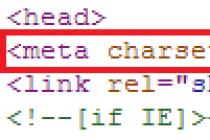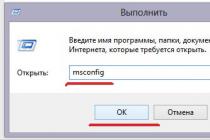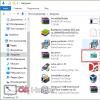Returning from work at night or wandering through dark alleys, there is a danger of being attacked by stray dogs, whose bites are sometimes life-threatening, if you do not see a doctor in time. It was for these cases that smart human brains came up with an ultrasonic repeller.
Industrial repellents have a rather complex scheme and are made on rather scarce components.
In this article we will consider a variant of such a repeller using the famous 555 timer series. The timer, as you know, can work as a generator of rectangular pulses, it is this connection that is used in the circuit.
The generator operates at a frequency of 20-22 kHz, as you know, many animals "communicate" in the ultrasonic range. Experiments have shown that frequencies of 20-25 kHz cause artificial fear in dogs, thanks to the tuning regulator, the generator can be tuned to a frequency of 17-27 kHz.

The circuit itself contains only 6 components and will not cause any difficulties. It is advisable to use a multi-turn regulator for more accurate tuning to the desired frequency.
The piezo emitter can be taken from a calculator or any other musical toys, you can also use any HF heads with a power of up to 5 watts, there is simply no point anymore.
The device works effectively at a distance of 3-5 meters, since there is no additional power amplifier in the circuit.

As a power source, it is convenient to use a crown, or any other source with a voltage of 6 to 12 volts.
List of radioelements
| Designation | A type | Denomination | Quantity | Note | Score | My notebook |
|---|---|---|---|---|---|---|
| Programmable timer and oscillator | NE555 | 1 | Into notepad | |||
| R1 | Resistor | 2.2 k Ohm | 1 | Into notepad | ||
| R2 | Resistor | 1 kΩ | 1 | Into notepad | ||
| R3 | Variable resistor | 4.7 k Ohm | 1 | Into notepad | ||
| C1 | Electrolytic capacitor | 10 μF | 1 | Into notepad | ||
| C2 | Capacitor | 10 nF | 1 | Into notepad | ||
| Piezo emitter | 1 |
A submersible ultrasonic transducer is a device designed to transmit ultrasonic vibrations into a liquid medium, containing a sealed housing with a diaphragm, which is part of the surface of this housing, inside which piezoelectric transducers are located and fixed on the diaphragm, the electrodes of which are electrically connected to a high-frequency cable used to supply piezoelectric emitters of high-frequency electric voltage from an ultrasonic frequency generator.
It is used to excite ultrasonic cavitation in a liquid cleaning medium, which intensifies the processes of cleaning parts from contamination. They are used in ultrasonic cleaning baths with a volume of more than 50 liters.
Fig. 1 Immersion transmitter
in U.Z. bath
The device of the ultrasonic submersible transducer is schematically shown in Fig. 1.
The generator is connected to a 220 volt 50 Hz network and converts the voltage frequency to 25,000 Hz (25 kHz) or 35 kHz. depending on the design of the immersion transducer.
High-frequency voltage is fed through a cable into a sealed transducer housing made of stainless steel, inside which piezoelectric emitters are mounted, connected in parallel.

Fig. 2 Piezoelectric emitter device
The piezoelectric transducer is the main unit of the submersible ultrasonic transducer. The device of this emitter is shown in Fig. 2.
The emitter has two piezoelectric plates (piezoelements) located between two metal plates: steel on the back side and aluminum on the front.
The piezoelectric elements are pulled together with the linings by means of a central bolt. A high-frequency voltage is applied to the central electrode located between the piezoelectric elements.
The piezoelectric emitter converts electrical energy into high-frequency mechanical vibrations, which are transmitted to the diaphragm of the submersible transducer, from which these vibrations are transmitted to the washing liquid.
The number of piezoelectric emitters in a submersible ultrasonic transducer can be from 4 to 11 or more pieces.
Piezoelectric emitters are fixed to the diaphragm by means of an adhesive connection.

Fig. 3 Immersion transducer
General view of an ultrasonic submersible transducer with a partially cut back cover shown in Fig. 3. It can be seen that the piezoelectric emitters are arranged in several rows, two in each row.
Submersible ultrasonic transducers can be used both in specially designed ultrasonic cleaning baths and in cleaning baths already available to the customer. The convenience of these converters is that they can be easily installed in different parts of the bath volume.
Unlike ultrasonic transducers, which are firmly attached to the bottom or side of the cleaning bath, submersible transducers can be replaced in a matter of minutes.
The generator for supplying submersible transducers with high-frequency voltage can be located from the ultrasonic bath at a distance of up to 6 meters.
Methods for mounting submersible transducers in an ultrasonic cleaning bath
Immersion transducers can be placed in cleaning baths in three different ways:
- placing the transducer at the bottom of the bath;
- hanging on the wall of the bath;
- by fixing the transducer on the bath wall.
Fig. 4 Placement of the transducer in the ultrasonic bath
The first two methods do not require making holes in the bath wall.
Some types of attachment of a submersible transducer in an ultrasonic cleaning bath are shown in Fig. 4.
When placing the transducer at the bottom of the bath, take into account the height of the cleaning solution layer above the diaphragm of the transducer.
One should strive to ensure that the height of this layer would be a multiple of half the wavelength of ultrasonic vibrations transmitted to the washing solution by a submersible transducer.
In this case, due to the reflection of ultrasonic waves from the water-air interface, a zone of standing waves is created in the washing solution (the phenomenon of reverberation). With the reverberation of ultrasonic waves in a liquid, the efficiency of ultrasonic cleaning is slightly higher.
As an example, let us determine the optimal height of this layer for a specific immersion transducer.
It is known that the speed of sound in water is 1485 m / s. The wavelength of ultrasonic vibrations is equal to the quotient of dividing the speed of sound by the frequency of these vibrations.
Suppose we have a submersible ultrasonic transducer with a diaphragm oscillation frequency of 25,000 Hz (25 kHz). The wavelength in this case will be 0.0594 m. Half the wavelength is 0.0297 m or 2.97 cm. The optimal height of the liquid in this case above the surface of the immersion transducer should be 2.97 cm x n where n is any positive integer.

Fig. 5 Standing waves in an ultrasonic bath
For example, for n = 40, the optimal height of the level of the washing solution above the surface of the submersible transducer will be 2.97x40 = 118.8 cm. The above is illustrated in Fig. 5.
Placement of submersible ultrasonic transducers on the walls of the cleaning bath is recommended when its depth is more than two times less than its width or length. In this case, the converters can be placed both on one wall of the bath and on its opposite walls.
The video shows the placement of submersible transducers on the side walls of the bath and the operation of submersible ultrasonic transducers located at the bottom of the bath.
Immersion transducers in operation
Selecting the Optimal Frequency for an Immersion Transmitter
When ultrasonic vibrations propagate in a liquid, a phenomenon called cavitation occurs, which means the formation of cavitation cavities in the liquid in the phase of the discharge of a sound wave and its subsequent collapse in the compression phase.

Fig. 6 Influence of frequency on ultrasonic cavitation
The behavior of cavitation cavities with a change in the vibration frequency is shown in the graph in Fig. 6.
The ordinate on the left side shows the value of the energy released during the collapse of a single cavitation cavity (cavitation energy), and the ordinate on the right shows the number of cavitation cavities per unit volume of liquid.
As can be seen from the graph, with an increase in the frequency of ultrasonic vibrations, the number of cavitation cavities in the liquid increases, and the energy of cavitation decreases.
With a decrease in the frequency of ultrasonic vibrations, the number of cavitation cavities in the liquid decreases, and the energy of cavitation increases.
In this case, for each frequency of ultrasonic vibrations, the product of the energy released by the cavitation cavity during its collapse by the number of these bubbles in the liquid is a constant value approximately equal to the energy transmitted to the liquid by the ultrasonic submersible transducer.
The influence of the frequency of ultrasonic vibrations on the number of cavitation cavities is discussed in detail on the website
For practice, it is important that the number of cavitation cavities is as large as possible, but at the same time the cavitation energy must be sufficient to remove impurities. Thus, to clean parts from contaminants that are loosely bound to the surface (fats, oils), converters with a frequency of 35-40 kHz should be used, and to clean parts from contaminants that are firmly connected to the surface (polishing pastes, varnish and polymer films), submersible transducers with a lower frequency of 20-25 kHz.

change drawing
Fig. 7 Ultrasonic bath with converters of different frequencies
Most optimal solution is the creation of such conditions when the number of cavitation cavities would be large and the energy of cavitation would also be large.
These conditions are realized in an ultrasonic cleaning bath with submersible transducers located on its walls, as shown in Fig. 7. Another option for the location of immersion transducers can be seen if you move the cursor over this figure.
In this case, two converters with different vibration frequencies of 25 and 35 kHz are used. A converter with a frequency of 35 kHz ensures the creation of a larger number of cavitation cavities in the volume of the washing liquid, and a converter with a frequency of 25 kHz increases the cavitation energy of these cavities.
Optimal number of immersion transducers for the cleaning bath
When determining the number of required submersible transducers, one must proceed from the fact that the maximum efficiency of ultrasonic cleaning is achieved at an ultrasonic power of 10 ... 30 watts per 1 liter of bath volume.
For example, for a bath with a volume of 50 liters, two transducers of the PP25.8 model are sufficient (see the table below).
For large-volume ultrasonic cleaning baths, for example, over 250 liters, satisfactory results are achieved even with an ultrasonic power of 4.5 watts per 1 liter of bath volume. For example, for a bath with a volume of 1000 l, 11 transducers of the PP25.8 model are sufficient.
Currently, there are many designs of ultrasonic submersible transducers on the domestic market.
The table shows specifications submersible ultrasonic transducers of the TSC Technosonic LLC company (Moscow).
This article does not fully cover all aspects of the design and use of submersible ultrasonic transducers. However, the presented material can be useful for specialists who are faced with specific tasks for the first time. the best option ultrasonic bath for cleaning products.
Emitters (ultrasonic) are actively used in echo sounders. Additionally, devices are used in receivers. Modern modifications are distinguished by high frequency and have good conductivity. The sensitivity of the emitter depends on many factors. It is also worth noting that the models use terminals that affect the overall resistance level.
Device diagram
The standard device diagram contains two terminals and one capacitor. The rod is used with a diameter of 1.2 cm. A magnet for the operation of the system requires a neodymium type. A stand is located at the bottom of any radiator. Capacitors can be attached via an expander or terminals. The selenoid winding is used with a conductivity of 4 microns.

Ring modification
Ring submersible ultrasonic transducers are generally manufactured for echo sounders. Most models have dipole capacitors. The linings for them are selected from rubber. General level of resistance in devices of this type equals 50 ohms. The terminals are used with and without an adapter. At the top of the selenoid is a protective ring. A rod is used with a diameter of at least 2.2 cm. In some cases, capacitors are used of channel type with a protection system. Their discharge conductivity is at least 5 microns. In this case, the frequency can vary greatly. In this case, much depends on the sensitivity of the element.
Yar device
An ultrasonic emitter for a humidifier is considered to be very common. If we consider that it has three capacitors. Typically, they are of the three-channel type. The total resistance level for this type of radiator is 55 ohms. They are often installed on echo sounders and low frequency receivers. Also the models are suitable for converters. Magnets are used with a diameter of 4.5 cm. The stands are made of brass or steel. The discharge conductivity is no more than 5.2 Mk.
Some modifications are used with the upper yar position. As a rule, it is located above the stand. It should also be noted that there are emitters with single-pole adapters. Solenoids are suitable for them only with high conductivity. Several rings are used at the top of the device. Discharge sensitivity is approximately 10 mV. If we consider modifications on resistor capacitors, then their total resistance level reaches a maximum of 55 ohms.
Double winding model
Emitters (ultrasonic) with double winding in Lately are made with an amplifier. Such devices are actively used on converters. Some emitters are made with double capacitors. The windings are used with wide straps. The rods are suitable with a diameter of 1.3 cm. The terminals must have a conductivity of at least 5 microns. The frequency of the devices depends on many factors. First of all, the diameter of the rod is taken into account. It should also be noted that expanders are used with and without pads.

Do-it-yourself reflector-based emitters
You can make an ultrasonic emitter from reflectors with your own hands. First of all, a neodymium magnet is procured. The support is used with a width of about 4.5 cm. The stroke may only be installed after the rod. It should also be noted that the magnet is fixed on the lining and closed with a ring.
The terminals for the device are selected of the conductor type. The discharge conductivity should be about 6 microns. The total resistance level of this type of emitters is no more than 55 ohms. Capacitors are used different types... Reflectors are selected with a small thickness. To install the elements, you will have to use the upper part of the rod is twisted on the film. In this case, it is important not to overlap the terminals.
Sonar devices
Emitters (ultrasonic) for echo sounders have good conductivity. The rod diameter for the standard model is 2.4 cm. Rings are usually of the close-fitting type. Modern models are made with tapered stands. They are lightweight and can work in high humidity conditions. Solenoids are used in different diameters. Electrical tape must be wound at the bottom of the devices. If necessary, you can make the emitter for the echo sounder yourself. For this purpose, capacitors are of a two-channel type. If we consider a device with a 2.2 cm rod, then its total resistance level will be 45 ohms.

Fish Finder Mods
Emitters (ultrasonic) for fish finders are produced with terminals of different conductivity. The most popular are modifications with adapters and a sensitivity of 12 mV. Some devices are equipped with compact single-channel capacitors. Their conductivity when loaded is 2 microns. The magnets on the emitters are installed with different diameters.
Most of the models are made with low stands. It should also be noted that the devices stand out for their high frequency. The terminals have good conductivity, but in this case, much depends on the thickness of the rod. Protective rings are installed in the upper part of the winding. To increase the conductivity of the emitter, terminals with a sensitivity of 15 mV or more are used.

Low impedance models
The ultrasonic emitter for low air humidifier stands out for its compact size. The windings are used with a thickness of 0.2 cm. The magnets are installed on supports or pads. The terminals are fixed at the top of the device. The standard version includes three capacitors.
The total resistance indicator is no more than 30 ohms. Condensers for some models are of a two-channel type. In this case, the conductivity is approximately 2 microns. There are also modifications with large diameter rods. They are used in echo sounders. Most emitters are manufactured specifically for transducers. Clamping rings are used from rubber or plastic. On average, the diameter of the rod for the modification is 2.2 cm.

High impedance devices
Modifications of this type are usually made for receivers. Their total conductivity level is 4 microns. Most of the devices are powered by contact terminals. It should also be noted that there are devices with a sensitivity of 15 mV. Capacitors for modifications are selected of a three-channel type. There are also resistor models. Their total resistance level starts from 55 ohms. Magnets on a powerful ultrasonic emitter are installed only of neodymium type. On average, the diameter of the part is 4.5 cm. The stands can be produced with linings or protective insulating films.

Models with single junction capacitors
Devices of this type are capable of providing a conductivity of 5 microns. They have enough high sensitivity... The rods on the ultrasonic transducer are installed with a diameter of 2 cm. The windings are used only with rubber rings. Dipole terminals are used at the bottom of the devices. The total resistance level when loaded is 5 ohms. Capacitors are allowed to be installed on emitters through expanders. For renewal low frequencies adapters are used.
If necessary, a modification to two capacitors can be made. For this, the terminals are installed with a conductivity of 2.2 microns. The rod is selected with a small diameter. It should also be noted that a short aluminum alloy stand is required. Electrical tape is used as insulation for the terminals. Two rings are attached to the top of the radiator. Capacitors are directly mounted through a dipole expander. The total resistance level should not exceed 35 ohms. The sensitivity depends on the conductivity of the terminals.
The invention relates to ultrasonic technology, in particular to devices for intensifying technological processes in liquid media, and can be used in mechanical engineering, electronic, pharmaceutical industry, instrument making and nuclear power engineering. An ultrasonic piezoceramic transducer includes a housing with at least one emitter installed in the through hole of its emitting membrane, the waveguide of which is connected to the housing by means of a welded seam, which additionally serves as a damper for damping bending vibrations, while for operation in corrosive media, the housing, the emitter and the waveguide is made of titanium. And when several emitters are installed in the housing, the distance between them is preferably chosen equal to one quarter of the wavelength of ultrasonic vibrations. The proposed invention simplifies the design of the transducer, increases the efficiency of ultrasonic vibrations when operating in corrosive media, and ensures reliable sealing of the housing from leaks of the sonicated liquid. 4 c.p. cl, 4 dwg
Drawings to the RF patent 2448782
The invention relates to ultrasonic technology, namely to devices for intensifying technological processes in liquid media: cleaning parts, extraction, etching, impregnation, and can be used in mechanical engineering, electrical, electronic, pharmaceutical industry, instrument making and nuclear power engineering.
A number of ultrasonic piezoelectric transducers are known, in which the elements of sealing their internal device from external influence liquid medium are made in the form of fluoroplastic or rubber seals. All of them have a common drawback: when installed in powerful piezoelectric transducers, they are destroyed over time under the action of ultrasound, as a result of which liquid leaks into the housing are formed and the emitters fail. (See Patent for utility model of the Russian Federation No. 66700, B06B 1/06 "Ultrasonic piezoceramic transducer", publ. 10.11.2005, as well as RF patent for invention No. 20090013, H04R 17/00 "Device for fastening a reinforced piezoelectric transducer", publ. . 10.09.1997 g.)
Thus, all such converters are of limited use.
Also known is a submersible ultrasonic transducer for sonicating a liquid in a bath, which includes a piezoelectric plate, a membrane and an element for fixing the transducer to the bath. To seal the internal cavity of the transducer from liquid leakage, an O-ring installed in the housing groove is used. To cover a larger sound area, several transducers are combined in a bath in one row. But even in this converter, the problem of sealing has not been solved, since it is possible for liquid to enter the inner cavity of the housing, due to wear of the sealing ring and weakening of the threaded connection. (See RF patent for invention No. 2009720, B06B 1/06 "Ultrasonic high-frequency transducer for sonication of liquid in a bath", publ. 03/30/1994)
Also known is an ultrasonic piezoceramic transducer for sonicating a liquid, which contains a radiating pad, a piezo package, a reinforcing pin, a flange, an O-ring, a nut, a pin for attaching to the bath, an acoustically decoupling membrane with a step and a damper. In this case, the flange and membrane shoulder are rigidly connected to each other by welding. Additional sealing is carried out by a rubber or fluoroplastic ring, which is attracted to the bottom of the bath by moving the nut along the hairpin.
Damping against bending vibrations is provided by a plastic ring. (See USSR author's certificate No. 1622025, B06B 1/06 "ultrasonic piezoceramic transducer for sounding liquid", publ. 23.01.1991)
The main disadvantage of this design is the complexity of the attachment point for the transducer to the bottom of the bath; moreover, the rubber or fluoroplastic ring used as a seal does not provide reliable long-term sealing of the transducer from the liquid it sounds, especially in the case of an aggressive solution of acids or alkalis.
Also known is an ultrasonic piezoceramic transducer with an emitter installed on the outer side of the bottom of the container with an element of its fastening made in the form of a welded seam and a threaded connection. (See Certificate for a useful model of the Russian Federation No. 35250, IPC B06B 1/06, publ. 10.01.2004) This ultrasonic piezoceramic transducer is used in a device for purifying a liquid, including a container, to the bottom of which the said transducer is attached from the outside. In this case, the fastening element is made in the form of a sleeve with an internal thread, rigidly fixed to the bottom of the container by welding, and the emitter is equipped with an external thread so that it can be screwed into the sleeve until it stops at the bottom of the container. In this device, as follows from the drawing, the problem of sealing is completely solved by attaching the emitters to the bottom of the container from the outside. However, in this case, it is not possible to avoid the loss of the intensity of ultrasonic vibrations, since the latter are transmitted, firstly, through the vessel wall, and secondly, an end gap is necessarily formed in the threaded connection, in which a partial loss of radiation power will also be observed, because it is practically impossible to fit perfectly the surface of the bottom of the container and the end of the radiator.
Therefore, it is necessary to simplify the design by eliminating the threaded connection. The objective of the present invention is to eliminate the disadvantages of analogs and the prototype, namely to ensure complete sealing of the transducer from leaks of the sonicated fluid and to achieve the maximum possible radiation power into the working fluid.
The problem is solved by sounding directly the liquid itself, which is in the container for processing products, while simultaneously neutralizing the flexural vibrations of the ultrasonic transducer membrane.
The technical result, which consists in simplifying the design of the transducer with a simultaneous increase in the intensity of ultrasonic vibrations in the liquid, is achieved due to the fact that at least one emitter is installed in the through hole of the radiating membrane or the membrane bottom of the housing with the possibility of direct contact of its waveguide with the sounding liquid, in this case, the waveguide made of a material with low acoustic resistance (titanium) is hermetically connected to the transducer body by a weld additional function a damper for damping bending vibrations of the radiating membrane. To provide high-quality connection welded to the body of the radiator, its waveguide is made in a T-shape with a head in the form of a shoulder, which overlaps the opening of the membrane bottom along the entire perimeter by 2-5 mm, forming a zone of homogeneous connection of the same metal. titanium makes it possible to use it in aggressive environments, and most importantly, titanium has a low acoustic resistance, which helps to minimize the power loss of ultrasonic vibrations in the emitter waveguide in contact with the sounding liquid.
The ultrasonic piezoceramic transducer is new, since the combination of the proposed features reflected in the claims, including in additional claims, has not been found in information sources.
The proposed ultrasonic piezoceramic transducer as a technical solution has an inventive step. The fact is that in industry, especially in heat exchange systems, it is often necessary to remove persistent deposits of salts and various scale from the surfaces of parts and mechanisms, while solutions of aggressive media in the form of acids and alkalis are used. To remove such harmful deposits, powerful ultrasonic radiation is required, at the same time, the ultrasonic transducer must be compact and resistant to aggressive media. The proposed ultrasonic piezoceramic transducer meets these requirements. The high density of the location of the emitters on the membrane of the transducer housing, the low acoustic resistance of titanium and the direct withdrawal of the working surface of the waveguides of the emitters into the sonicated liquid make it possible to provide the minimum physically possible loss of the intensity of ultrasonic vibrations and the maximum possible power of the cavitation effect to remove harmful deposits from the treated surfaces.
The proposed technical solution is not obvious, since the welded seam made in the manner described above is used not only as an element for attaching the emitter waveguide to the converter housing, but also serves as a damper for bending vibration damping. Thus, two functions: fastening and damping of bending vibrations are combined in one feature, which led to a simplification of ultrasonic transducers and, at the same time, to an increase in the intensity of ultrasonic radiation.
The indicated constructive difference and combination of functions were not found in the informational, scientific and technical literature and patent materials, which indicates the non-obviousness and originality of the proposed ultrasonic piezoceramic transducer. The noted difference, in our opinion, cannot be attributed to the method of conventional engineering design.
Manufacturing and testing of prototypes showed their efficiency and confirmed the receipt of the technical result specified in the description of the invention, which corresponds to the criterion of "industrial applicability".
The transmitter housing is made in a sealed design and can be used as a submersible version, however, it can also be installed in the bottom of the working vessel.
The invention is illustrated by drawings, where figure 1 shows the case of an ultrasonic piezoceramic transducer with a local cut-out (side view), figure 2 shows a radiating membrane with emitters arranged in one row, figure 3 shows a radiating membrane with emitters placed in two row, figure 4 shows a General view of the converter for open containers with a radiator in section. The ultrasonic piezoceramic transducer contains a housing 1 with a through hole 3 made in the bottom or a radiating membrane 2, in which at least one piezoceramic radiator 4 is installed, including a sound-conducting T-shaped waveguide 5 with a collar 6 and a radiating surface 7, a package of piezoelements 8 , a reinforcing pin 9 and a steel nut 10. The sound-conducting waveguide 5 of the radiator 4, inserted freely into the hole 3 of the bottom or radiating membrane 2 (Fig. 4), is connected by means of a collar 6 with the radiating membrane or the bottom of the tank by a weld 11. In all cases, the radiating surface 7 of the waveguide 5 is in direct contact with the sounding liquid, which increases the intensity of ultrasonic vibrations. The welded seam is performed by argon-arc welding in an inert gas environment. To ensure a high-quality welded connection of the radiator 4 with the radiating membrane 2 or the bottom of the tank and the reliable operation of the seam as a damper of bending vibrations, the diameter of the beads should be 4-10 mm larger than the diameter of the radiator d 2, i.e. collar 6 should overlap hole 3 along its entire perimeter by at least 2 mm, and the outer diameter of the seam d3 should be 10-12 mm larger than the diameter of collar 6 or be 5-6 mm in width. The thickness of the collar 6 is in the range of 0.8-1.0 mm and is equal to the thickness of the wall of the housing 1. All dimensions are selected experimentally and are due to the possibility of maximum transmission of ultrasonic vibrations into the sonicated liquid in order to ensure effective removal of deposits or scale from the treated surfaces.
To ensure maximum conductivity of ultrasound and the possibility of operation of the transducer in aggressive traces, its body, emitter and waveguide are made of titanium, it is permissible to make them from stainless steel, however, the intensity of ultrasonic cavitation due to the higher acoustic resistance of stainless steel will be lower. Further, due to the fact that the titanium waveguide has a lower acoustic resistance than the steel nut 10, which functions as a reflector, the vibration amplitude on the emitting surface 7 will be higher, i.e. emitter 4 operates in a one-way radiation mode, increasing the flow of acoustic energy into the sounding liquid.
With large sizes of the container or the transducer emitting membrane 2, several emitters 4 can be installed on their surface in one (Fig. 2) or several rows (Fig. 3). To supply electricity to the piezoelectric elements of the package 8, a fitting 12 is provided. And to fix the housing 1 of the converter at the place of processing, corners 13 are installed.
Ultrasonic ceramic piezoelectric transducer works as follows.
When a generator (not shown) electric oscillations of ultrasonic frequency (20-25 kHz) through the nozzle 13 to the package of piezoelectric elements 8, in them, under the action of the piezoelectric effect, electrical energy is converted into the energy of mechanical vibrations, which through the sound-conducting titanium waveguide 5, the emitting surface 7 enter directly into the sounding liquid, causing its cavitation. Under the influence of cavitation, active mixing of the sounding liquid and microexplosions in it occurs, due to which the adhesion forces of the removed deposits and scale are overcome.
To create a dense and uniform ultrasonic field, the emitters 4 should be located quite tightly, preferably the distance between them is chosen equal to one quarter of the wavelength, i.e. /4.
All of the above design differences of the proposed transducer, as well as the intensity of ultrasonic vibrations that it develops, amounting to 2.4-2.7 W / cm 2 at maximum efficiency, makes it possible to overcome the adhesion forces of such harmful technologically formed coatings as salt or scale deposits.
The proposed transducer is implemented in ultrasonic baths and in the design of a submersible ultrasonic piezoceramic transducer, which are manufactured and tested to obtain the technical result specified in the description of the invention, i.e. it was confirmed that they are efficient, easy to manufacture, provide reliable body tightness against leaks of the sonicated liquid and high intensity of ultrasonic vibrations.
Sources of information
1. RF patent for useful model No. 84971, MKI B06B 1/06, G01F 1/66, publ. 01/21/2009
3. US patent No. 4957669, B068B 3/00, publ. 09/18/1990
4. Application E11B 0420190, B068B 1/06, H04R 17/00, publ. 04/03/1991
5. Application of Germany No. 4014199, B06B 1/06, H04R 17/100, publ. 11/22/1990
CLAIM
1. Ultrasonic piezoceramic transducer, including a housing with a radiator with a waveguide of ultrasonic vibrations installed in it using welding, characterized in that at least one radiator is installed in the through hole of the front radiating membrane or the bottom of the case with the possibility of direct contact of the radiating surface of the waveguide with the sonicated liquid, while the waveguide made of acoustically transparent material is hermetically connected to the transducer housing by a welded seam that performs the additional function of a bending vibration damper.
2. Ultrasonic piezoceramic transducer according to claim 1, characterized in that its body and the emitter waveguide are made of titanium or stainless steel.
3. An ultrasonic piezoceramic transducer according to claim 1, characterized in that the waveguide of the ultrasonic oscillation emitter is T-shaped with a head in the form of a collar for attaching it to the transducer body, while the collar overlaps the hole along the entire perimeter by 2-5 mm.
4. Ultrasonic piezoceramic transducer according to claim 1, characterized in that the width of the weld seam connecting the waveguide bead with the transducer body is 5-6 mm.
5. Ultrasonic piezoceramic transducer according to claim 1, characterized in that when several emitters are installed in the housing, the distance between them is preferably about one quarter of the wavelength of ultrasonic vibrations.
Ultrasound is elastic acoustic waves inaudible to humans, the frequency of which exceeds 20 kHz. It is customary to distinguish between low-frequency (20 ... 100 kHz), medium-frequency (0.1 ... 10 MHz) and high-frequency (more than 10 MHz) ultrasonic vibrations. Despite the kil megahertz, ultrasonic waves should not be confused with radio waves and radio frequencies. These are completely different things!
By its physical nature, ultrasound is no different from ordinary audible sound. The frequency boundary between sound and ultrasonic waves is conditional, it is determined by the subjective properties of human hearing. For reference, high-frequency vibrations are well felt by animals (including pets), and for bats and dolphins, they are vital.
Ultrasound, due to its short wavelength, propagates well in liquids and solids. For example, ultrasonic waves in water attenuate about 1000 times less than in air. Hence, the main areas of their application follow: sonar, non-destructive testing of products, "sound imaging", molecular and quantum acoustics.
To generate ultrasonic vibrations, the following types of transducers (eng. "Ultrasonic transducer") are used:
Piezoceramic (piezo);
Electrostatic (electrostatic);
Electromagnetic
For the latter option, even conventional high-frequency sound loudspeakers (in the slang "tweeters") are suitable, which have sufficient efficiency to generate signals in the near ultrasonic range of 20 ... 40 kHz.
Piezoceramic ultrasonic transducers (Table 2.10) are produced, as a rule, in a pair with frequency-matched piezo receivers. Typical parameters of "ultrasonic tandem": resonance frequency 37 ... 45 kHz, sound pressure level at a distance of 30 cm - 95 ... 105 dB (A), operating voltage 12 ... 60 V, capacity 1000 ... 3000 pF, transmitter output impedance 200 ... 500 Ohm , the input impedance of the receiver is 10 ... 30 kOhm.
Table 2.10. Parameters ultrasonic emitters
It is recommended to apply not unipolar, but multipolar impulses to the plates of ultrasonic piezo emitters, i.e. in pauses, form a voltage of reverse polarity. This contributes to the accelerated discharge of the equivalent capacitance of the emitter and an increase in the speed of response.
In Fig. 2.53, a… l shows the connection diagrams of ultrasonic emitters to MK. For the formation of bipolar pulses, transistor bridges and isolation transformers are widely used. If you reduce the frequency of generation, then the above circuits will fit "one to one" for the audible range, ie. for the previously considered sound piezoceramic emitters.

Rice. 2.53. Wiring diagrams for connecting ultrasonic emitters to MK (beginning):
a) smoothing the waveform supplied to the ultrasonic emitter BQ1 using the inductor L1. The R1 resistor regulates the amplitude;
b) transistors VT1, VT2 alternately open with short pulses from MK. For reliability, transistors with a large permissible collector current should be chosen so that they do not fail with a low ohmic resistance of the inductor L1 \
c) capacitor C1 differentiates the signal and eliminates the DC component, which allows the BQ1 ultrasonic piezoelectric emitter to be connected to a bipolar power supply;
d) low-power ultrasonic transceiver. The divider R1, R2 determines the operating point of the ADC MK when receiving a signal and the amplitude of the output pulses when transmitting a signal;
e) ultrasonic rangefinder transceiver. The pulse frequency is 36 ... 465 kHz, the voltage across the BQ1 emitter is 50 ... 100 V (the maximum is selected by the capacitor C3). Diodes VD1, VD2 limit the signal to the receiver. Transformer 77 contains in windings I, II 15 turns of PEV-0.3 wire, in winding III - 100 ... 200 turns of PEV-0.08 (ring M2000HM K10x6x5); O

About Fig. 2.53. Wiring diagrams for connecting ultrasonic emitters to MK (continued):
f) the use of a logic chip DD1 hardware eliminates the simultaneous opening of the transistors of one arm. Impulse noise arising in the power supply circuit due to non-simultaneous switching of inverters DD1.l… DD13 and variance of I - V characteristics of transistors are eliminated by the filter L /, C1. Diodes VD1 ... VD4 become in case of replacement of the sound HF speaker BA1 (10GD-35, 6GD-13, 6GDV-4) with a more powerful ultrasonic piezoelectric emitter;
g) increasing the power of the emitter BQ1 using a voltage doubler on the DD1 microcircuit and increased nutrition+ 9 ... + 12 V. VT1 transistor matches logic levels;
h) an increase in the voltage amplitude on the BQJ emitter occurs due to increased voltage power supply +9 V and energy storage in the choke L1 \
i) field-effect transistors K77, VT2 (replacement of IRF7831) reduce energy losses during switching. Resistors R1, R2 do not allow transistors to open when MK restarts; O

About Fig. 2.53. Wiring diagrams for connecting ultrasonic emitters to MK (end):
j) the ultrasonic sonar operates at a frequency of 40 kHz and generates pulses with a duration of 0.4 ms. The signal amplitude on the BQ1 piezoelectric emitter (Murata) reaches 160 V. The inductance of the secondary winding of the T1 transformer together with the capacitance of the BQ1 piezoelectric emitter forms an oscillatory circuit tuned to a frequency close to 40 kHz. Inductance of the primary winding of the transformer T1 - 7.1 MK H, secondary - 146 MK H, quality factor Q> 80;
k) the ultrasonic hydroionizer operates at a frequency of 1.8 ... 2 MHz. The T1 transformer is wound on three 50BH K20x 10 × 5 cores. Windings I and II each contain 4 turns of PEV-0.3 wire folded in three, winding III - 12 turns of PEV-0.3 wire. Coil L1 contains 5 turns of PEV-0.8 wire on a mandrel with a diameter of 8 mm with a pitch of 1 mm. The BQ1 emitter has a diameter of 30 mm (PZT piezoceramic). Resistor R1 reduces voltage surges at the drain VT1.














